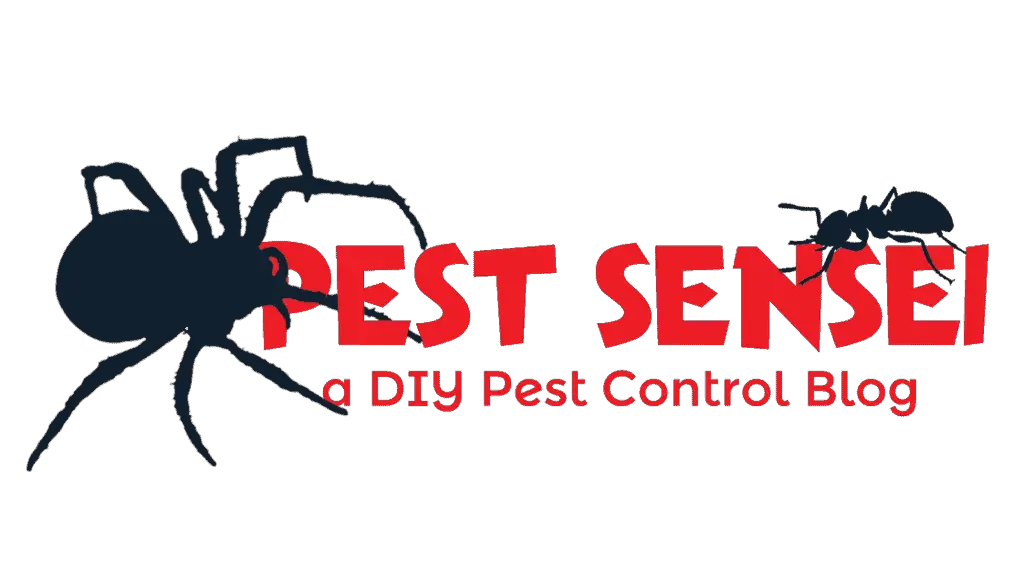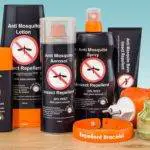When it comes to skin-applied mosquito and insect repellents, the market offers a plethora of options. But beyond the price tag, what specifications should you consider? In this article, we will guide you in selecting the ideal insect repellent that caters to your needs.
Opt for an EPA-registered repellent containing DEET, picaridin, IR3535, or oil of lemon eucalyptus or PMD. They offer comparable efficacy and are generally safe for use. Steer clear of repellents that lack proper labeling. Even if they contain the same active ingredients, their effectiveness may be questionable.
Continue reading to learn more.
- Understanding How Insect Repellents Work
- Active Ingredients in Insect Repellents
- Essential Oils as A Skin Repellent
- Comparing Synthetic Repellents to Natural, Plant-Based Repellents
- The Importance of Using only EPA-Registered Repellents
- Factors Affecting Repellent Efficacy
- Choosing the Right Formulation
- Final Words
Understanding How Insect Repellents Work
Insect repellents function through two primary mechanisms: producing odors disliked by insects or interfering with their ability to detect a host.
Active Ingredients in Insect Repellents
All mosquito and insect repellent products contain active ingredients, commonly referred to as a.i. These ingredients are responsible for the repellent’s effectiveness, and can vary in characteristics, sources, efficacy, and residual effects.
DEET
DEET, short for N,N-diethyl-m-toluamide, stands as the most renowned and effective repellent worldwide, endorsed by esteemed organizations like the WHO, CDC, and EPA. In fact, DEET sets the benchmark against which all new repellents are compared.
With over 70 years of market presence, DEET is a key component in many insect repellents due to its proven efficacy and safety record.
Regrettably, the reputation of DEET is sometimes clouded by exaggerated concerns, often driven by a natural, plant-based repellent agenda. While isolated cases of adverse effects associated with DEET exist, they are primarily a result of misuse, such as ingestion.
When used according to the label instructions – avoiding ingestion and limiting application to exposed skin – DEET is safe even for infants, pregnant women, and breastfeeding mothers.
It is important to note that DEET acts as a solvent for certain materials, including plastic, varnish, and some synthetic fibers. Caution should be exercised to prevent damage to items like sunglasses, clothing made of nylon, rayon, spandex, as well as painted or varnished surfaces.
The concentration of DEET directly impacts the duration of repellency. A product with 20-30% DEET can provide up to 12 hours of protection, depending on the formulation. However, it is crucial to understand that higher concentrations do not enhance repellency, and may lead to undesired effects.
Based on the wealth of supporting efficacy and safety data, I strongly recommend using DEET repellents as they are the most effective choice for insect repellency.
Off! Deep Woods®
If you are looking for a reliable tick repellent, I recommend getting Off!(R) Deep Woods®. It contains DEET, the gold standard in repellent. A single application can last you for a few hours. This product is suitable for children, pregnant and breastfeeding mothers.
Picaridin
Picaridin serves as an alternative to DEET with comparable efficacy. Recommended by the CDC and EPA, picaridin is considered safe for children, pregnant women, and breastfeeding mothers. However, misusing picaridin-based repellents can also lead to adverse health effects.
One advantage of picaridin over DEET is its odorless nature and non-damaging properties to plastic and synthetic fibers.
Ranger Ready Picaridin 20%
If you prefer a non-DEET option, consider Ranger Ready Picaridin Repellent. It gives you 8-12 hours protection against all sorts of biting insects, minus the odor from DEET.
IR3535
IR3535 is another synthetic repellent that matches DEET in effectiveness. Similar to picaridin, IR3535 is odorless and does not cause damage to plastic or synthetic fibers.
Research indicates that IR3535 may not be as effective as DEET against Anopheles mosquitoes, which transmit malaria. Therefore, if you reside in areas with Anopheles mosquitoes, consider alternative repellent options.
Avon Skin-So-Soft SSS Bug Guard Plus Sunscreen
Avon Skin-So-Soft SSS Bug Guard Plus Sunscreen is your ultimate 2-in-1 defense against insect bites and harmful UV light.
Long-lasting and reliable, this product harnesses the power of IR3535 to provide hours of protection against mosquitoes, ticks, and other biting insects.
Not only that, it also shields you from 97% of UVB rays, making your outdoor activities under the sun enjoyable and worry-free.
With its water resistance lasting up to 80 minutes, you can confidently embrace water-based adventures without compromising your protection.
Oil of Lemon Eucalyptus and p-Menthane-3,8-diol (PMD)
Derived from lemon eucalyptus leaves, oil of lemon eucalyptus (OLE) stands as the sole plant-based repellent recommended by the CDC and EPA. For those seeking a reliable and natural repellent, lemon eucalyptus is an excellent choice.
OLE contains citronellal, which is also present in citronella and lemon eucalyptus essential oil and exhibits insect-repelling properties. However, it is the p-Menthane-3,8-diol (PMD) within OLE that makes it highly effective. PMD offers strong repellency against insects and provides long-lasting protection due to its non-volatile nature.
Please note the distinction between oil of lemon eucalyptus and lemon eucalyptus essential oil. The former contains a higher concentration of PMD (around 20-30%), making it a more potent repellent compared to the latter.
PMD can be artificially synthesized. If a product explicitly mentions PMD, it indicates synthetic production. Otherwise, it will be labeled as OLE.
While OLE and PMD are derived from plants, they should not be used on children under the age of 3.
Off! Botanical
If you just need a short period of protection for short outdoor activities, such as dining, jogging, or bringing your kids to the park, you can use Off! Botanical that contains PMD, the active ingredient in lemon eucalyptus oil.
Neem Oil
Neem oil, derived from neem seeds, is a natural product containing azadirachtin, an active ingredient that repels insects. It is worth noting that neem oil is not among the EPA-recommended repellents, although it has been more extensively studied compared to other essential oils.
In terms of efficacy, neem oil extracts offer short-duration protection against several mosquito species. However, studies consistently show lower effectiveness and shorter protection periods compared to DEET, picaridin, IR3535, and oil of lemon eucalyptus.
Despite being promoted as a plant-based organic product, neem oil can cause skin irritation in individuals with allergies.
Essential Oils as A Skin Repellent

There is a market demand for “natural” and “safer” repellents, and essential oils often come into play. These oils are concentrated extracts from plants and are commonly used in cosmetic products.
However, it’s important to note that a higher concentration of essential oil is needed to achieve a repellent effect compared to what is found in cosmetic products. Application of high concentrations of essential oils on the skin can lead to contact dermatitis.
Research indicates that essential oils have some degree of repellency against biting insects. However, they do not provide long-lasting protection due to their high volatility. Frequent reapplication may be necessary, but excessive use can result in skin issues.
Another concern with essential oils is their content variability. Since they are not regulated, the exact content of essential oils is often unknown. Consequently, they may contain allergens or high concentrations of substances harmful to the skin.
Some essential oils with repellent properties include citronella, peppermint, lemongrass, turmeric, pine, cedarwood, clove, and lemon eucalyptus essential oil (distinct from oil of lemon eucalyptus).
Although EPA does not recommend essential oil repellents, they offer some level of protection against nuisance biting insects. However, I personally do not recommend relying on essential oils as repellents, as there are more effective options available.
Comparing Synthetic Repellents to Natural, Plant-Based Repellents

The growing concern for safety and the environment has led to an increased preference for natural, plant-based repellents. However, are they truly superior to synthetic repellents?
Contrary to popular belief, natural, plant-based repellents are not inherently safer than their synthetic counterparts. While they can be effective, their extraction often requires the use of harmful solvents.
Synthetic repellents generally have more comprehensive safety data compared to plant-based options due to increased scrutiny. Conversely, limited safety data is available for most “natural” repellents. Interestingly, natural products are often assumed to be safe unless proven otherwise, while the opposite is true for synthetic products.
It is important to note that natural and plant-based products are not automatically safe. Essential oils, for example, can be poisonous if misused. While deaths related to DEET ingestion are known, few are aware that essential oils have also caused fatalities through ingestion.
Both natural and synthetic chemical substances can be toxic if the concentration is high enough. Hence, the notion that synthetic DEET is safer than natural oil of lemon eucalyptus (OLE) holds weight, as OLE is not recommended for children under 3 years old, while DEET can be used for individuals over 2 months old (according to CDC, FDA, EPA, and AAP guidelines).
One significant issue with natural products is the lack of extensive efficacy data. Research on the effectiveness of plant-based repellents compared to DEET, picaridin, and IR3535 is limited and often hindered by varying test protocols.
While some plant-based repellents, such as OLE, neem oil, and citronella oil, show promise, many others lack sufficient evidence. If opting for a plant-based repellent, always choose one recommended by local authorities. Currently, oil of lemon eucalyptus is the only plant-based repellent with proven efficacy and safety data.
On top of that, the production of plant-based repellents does not necessarily guarantee environmental friendliness compared to synthetic repellents. Cultivating these plants often involves the use of fertilizers and pesticides, which have their own environmental consequences.
Furthermore, the extraction of plant-based repellents using solvents like methanol and hexane, depending on the methods employed, can be hazardous in high concentrations and potentially harmful to the environment if not properly disposed of.
The Importance of Using only EPA-Registered Repellents
EPA registration signifies that manufacturers have provided technical datasheets to demonstrate the efficacy and safety of their repellents. This provides a level of assurance that their product claims are supported by scientific evidence.
Products lacking EPA registration cannot substantiate their claims scientifically, raising doubts about their efficacy and safety.
The EPA offers a search tool to find registered skin-applied repellents that suit your needs.
Factors Affecting Repellent Efficacy
Differences in efficacy and duration of protection among repellents with the same active ingredient and concentration can be attributed to two factors.
Formulation plays a crucial role. While active ingredients determine effectiveness, formulation can enhance efficacy, duration of protection, and dictate product usage. Unfortunately, formulation details are often not disclosed on product labels.
Test methods employed by different manufacturers can vary, making direct comparison of data challenging despite the WHO’s repellent testing guideline.
Choosing the Right Formulation
Most skin-applied insect repellents are available as sprays or lotions, offering a choice based on personal preference.
Some products combine repellent and sunscreen. However, it is not recommended due to differing application frequencies. Sunscreen is typically reapplied more frequently than repellent, as repellent provides longer-lasting protection.
If using both sunscreen and DEET repellent, apply sunscreen first. Applying sunscreen over DEET can increase DEET absorption by the skin, potentially leading to unwanted effects.
Final Words
Protecting ourselves from diseases and discomfort while outdoors is crucial, which is why choosing a reliable insect repellent is important. Regardless of the product you choose, it is essential to read the product label and carefully follow the manufacturer’s instructions for its use. This ensures maximum effectiveness and safety.



